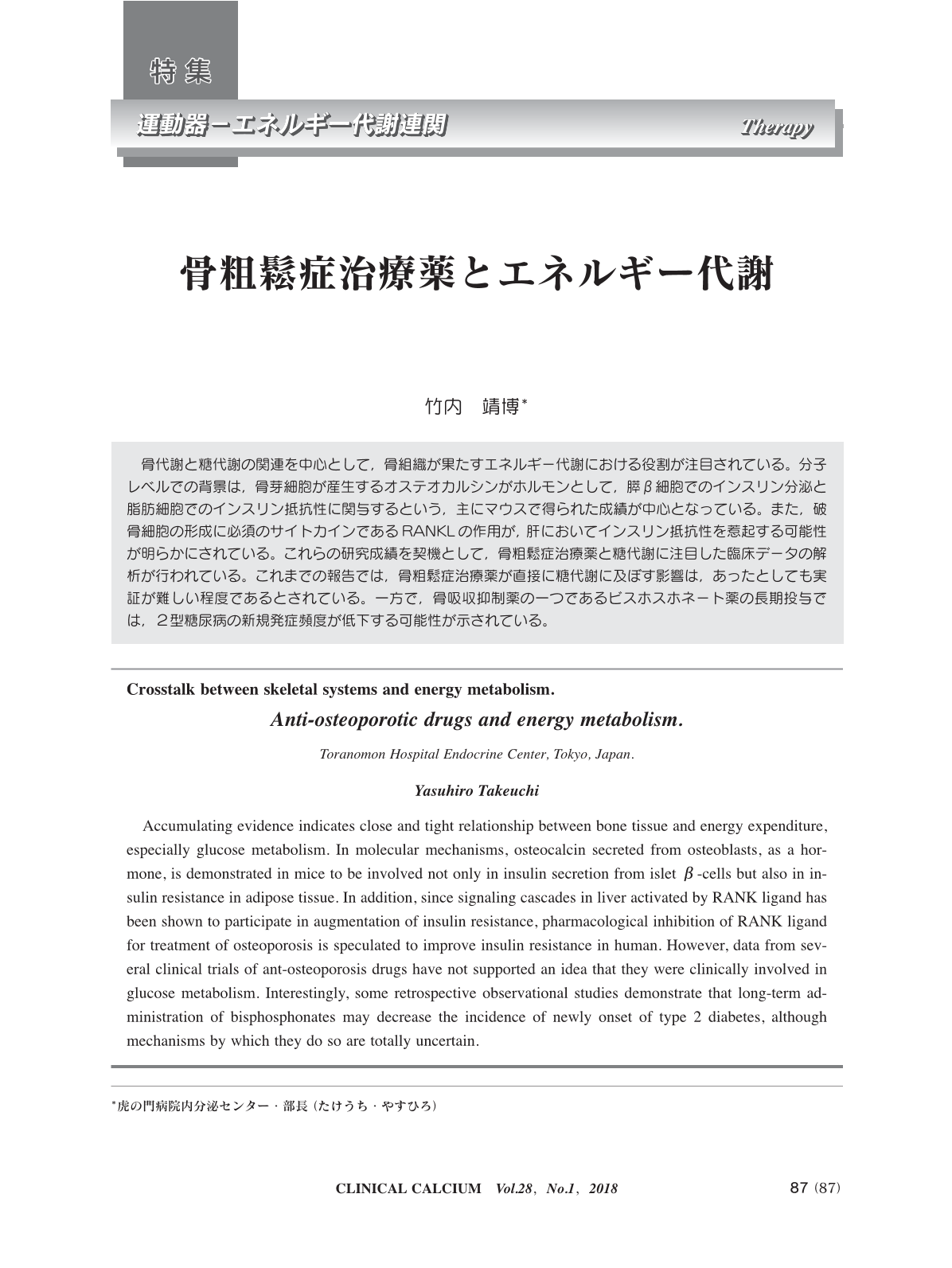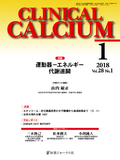Japanese
English
- 有料閲覧
- Abstract 文献概要
- 1ページ目 Look Inside
- 参考文献 Reference
骨代謝と糖代謝の関連を中心として,骨組織が果たすエネルギー代謝における役割が注目されている。分子レベルでの背景は,骨芽細胞が産生するオステオカルシンがホルモンとして,膵β細胞でのインスリン分泌と脂肪細胞でのインスリン抵抗性に関与するという,主にマウスで得られた成績が中心となっている。また,破骨細胞の形成に必須のサイトカインであるRANKLの作用が,肝においてインスリン抵抗性を惹起する可能性が明らかにされている。これらの研究成績を契機として,骨粗鬆症治療薬と糖代謝に注目した臨床データの解析が行われている。これまでの報告では,骨粗鬆症治療薬が直接に糖代謝に及ぼす影響は,あったとしても実証が難しい程度であるとされている。一方で,骨吸収抑制薬の一つであるビスホスホネート薬の長期投与では,2型糖尿病の新規発症頻度が低下する可能性が示されている。
Accumulating evidence indicates close and tight relationship between bone tissue and energy expenditure, especially glucose metabolism. In molecular mechanisms, osteocalcin secreted from osteoblasts, as a hormone, is demonstrated in mice to be involved not only in insulin secretion from islet β-cells but also in insulin resistance in adipose tissue. In addition, since signaling cascades in liver activated by RANK ligand has been shown to participate in augmentation of insulin resistance, pharmacological inhibition of RANK ligand for treatment of osteoporosis is speculated to improve insulin resistance in human. However, data from several clinical trials of ant-osteoporosis drugs have not supported an idea that they were clinically involved in glucose metabolism. Interestingly, some retrospective observational studies demonstrate that long-term administration of bisphosphonates may decrease the incidence of newly onset of type 2 diabetes, although mechanisms by which they do so are totally uncertain.



